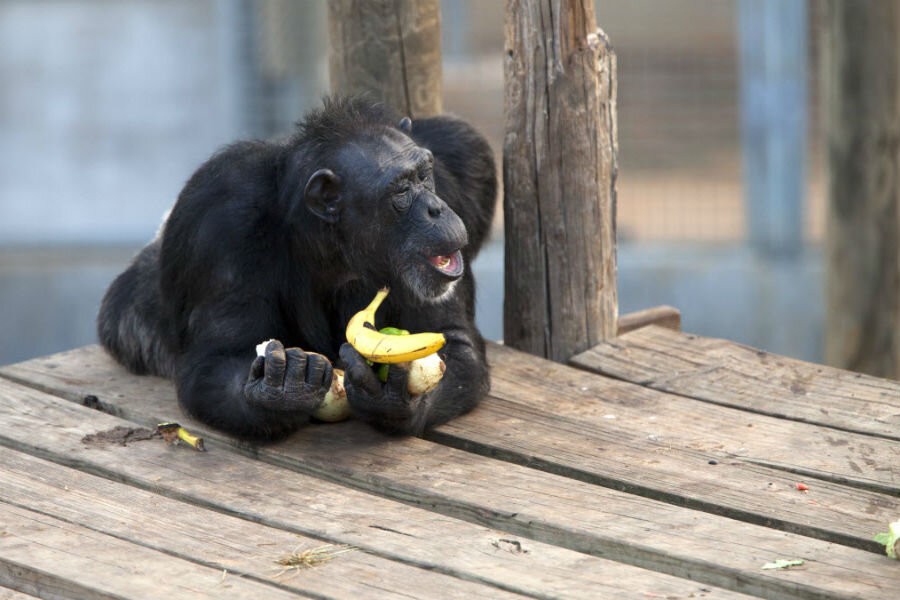Hundreds of chimps to move from research labs to sanctuaries
Loading...
Hundreds of chimpanzees previously used in research experiments will soon be roaming free in their new home at a chimp sanctuary.
Buttercup, Charisse, Emma, Genesis, Gertrude, Gracie, Jennifer, Latricia and Samira were all born in a lab and had been used in medical testing at the New Iberia Research Center in Louisiana for at least a decade. But thanks to the advocacy work of nonprofit group "Project Chimps," they will now live at a sanctuary in northern Georgia, with more than 200 other lab chimps set to join them soon.
The move is an exciting milestone, not just for Buttercup and her friends, but for chimps and animal rights advocates all over the US.
"This marks the end of privately funded research on chimpanzees in the U.S. That's a huge deal," said Sarah Baeckler, who leads Project Chimps, to CBS News. "That's the end of an era for these guys."
It's the latest victory in a long battle to stop research on chimps, considered to be the smartest primate and closest relative to humans.
In June 2015, the U.S. Fish and Wildlife Service granted endangered species status to captive chimps, a move that made most invasive research on chimps (with the exception of research that would "benefit the species in the wild" or contribute to conservation efforts) illegal.
Several months later, in November, the National Institutes of Health (NIH) announced that it would end all support for any research on chimps and retire the last 50 chimps being held in reserve for future experiments. As Molly Jackson reported for The Christian Science Monitor at the time:
Animal rights advocates, including those who argue that governments should recognize their "personhood," have spent decades fighting the perception that it's acceptable to subject humans' closest relatives to experiments and conditions that would never be approved for humans. But the NIH's decision appears to be based on just as much science, and practicality, as justice: Not a single scientist has applied to use the NIH's chimps for two and a half years....
The similarities that led many scientists to see chimps as ideal human analogs – they are genetically and behaviorally similar but without legal rights – are exactly what drives many people to protest chimp research, and the underlying assumption that the apes belong to a different ethical category.
The chimps affiliated with NIH are also set to be transferred to a sanctuary – the federally-funded Chimp Haven in Louisiana – but the process has been slow thus far. The institute announced that it would begin the transfer process in 2013, when it began phasing out biomedical research on chimps. But as of January 2016, nearly 400 chimps remained in the labs, The Washington Post reported.
For its part, Project Chimps has agreed to house all 220 chimps from the New Iberia Research Center at its sanctuary, where the chimps will live in social groups and have access to toys, puzzles, and outdoor space with trees. The facility currently has the capacity to house 80 chimps, but is expanding and will eventually be able to house 300, Ms. Baeckler told the Huffington Post.
"[O]ur sole purpose is to provide care to the chimps and give them choices on what they would like to eat, who they would like to spend time with, what toys they'd like to play with, etc.," she said. "After quarantine, they will also have the ability to go out into the open-top enclosed space to spend time under the trees and foraging through grass. We really can't wait for that moment."








